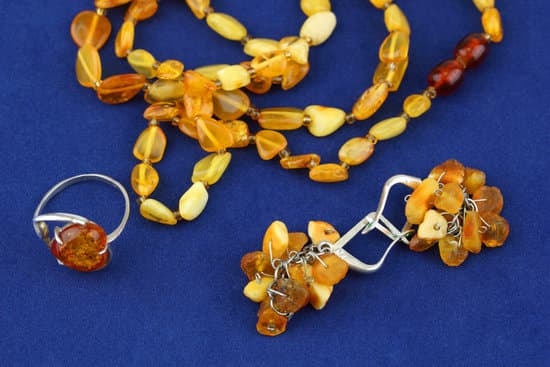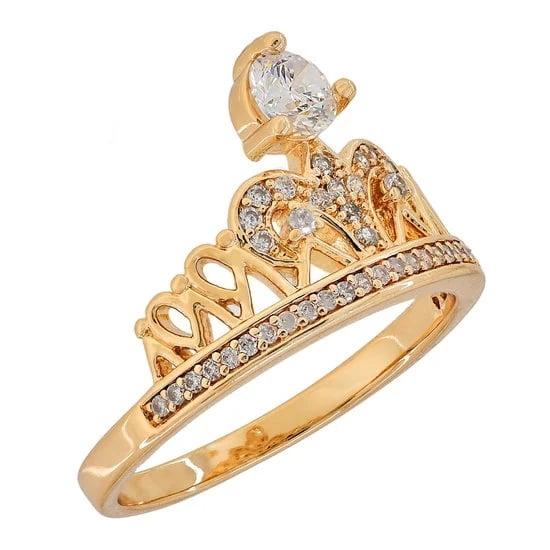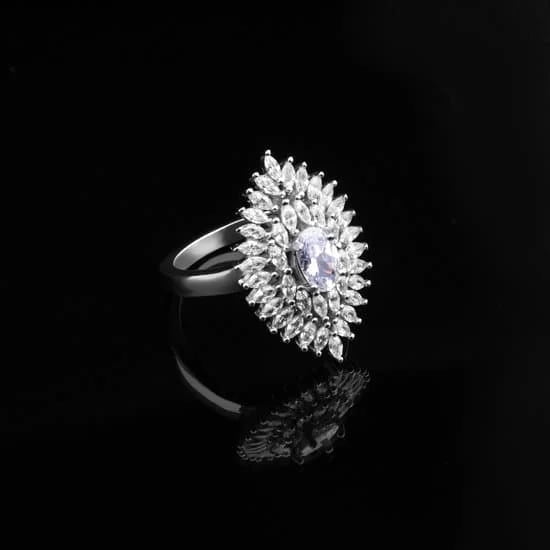Diamond jewelry has long been associated with elegance, luxury, and timeless beauty. But what did diamond jewelry actually cost in the 1940s? In order to answer this question and gain a deeper understanding of the value of diamond jewelry during this era, it is important to explore the historical context, factors influencing prices, consumer perspectives, and the impact of advertising and marketing techniques.
The 1940s was a time of great change in both socio-economic and global contexts. The world was engulfed in World War II, which had significant implications for the production and availability of diamonds. Additionally, societal changes driven by post-war optimism were reflected in fashion trends and cultural norms. Understanding these historical factors is crucial in comprehending how diamond jewelry played a role in people’s lives during this time.
During the 1940s, diamond jewelry held immense popularity and symbolic significance. Its glamorous allure made it a must-have accessory for both men and women. Diamond engagement rings became increasingly popular during this era as well, cementing diamonds as a symbol of commitment and love. Beyond fashion symbolism, diamond jewelry was also seen as an investment, representing not only financial security but also personal achievement.
In order to fully grasp the value of diamond jewelry in the 1940s, we must delve into various aspects such as historical documents that provide concrete information on prices, consumer perspectives on affordability and value at the time, influential figures that shaped demand and pricing through their celebrity status or lifestyle choices.
By exploring these elements along with an analysis of advertising techniques employed during that period, we can better appreciate not only what diamond jewelry cost back then but also its lasting significance today.
Historical Context
In order to fully understand the cost of diamond jewelry in the 1940s, it is crucial to have a clear picture of the socio-economic landscape during that time period. The 1940s was a decade defined by significant historical events, most notably World War II, which had profound effects on the global economy and consumer behavior.
World War II
World War II had a major impact on all aspects of society, including the diamond jewelry industry. Many diamond mines were closed or seized as part of war efforts, leading to a decrease in the supply of diamonds. Additionally, the disruption in international trade and scarcity of resources resulted in increased production costs for both rough and polished diamonds.
The Great Depression aftermath
The 1940s marked the end of the Great Depression era in the United States. While there was slow economic recovery during this time, it was still an era characterized by financial instability for many individuals and families. This meant that purchasing luxury items such as diamond jewelry was often seen as a symbol of status and wealth.
Post-war prosperity
Towards the end of the decade, as World War II came to an end, there was a shift towards post-war prosperity and economic growth. This period witnessed an increase in disposable income and consumer spending power, leading to a rise in demand for luxury goods including diamond jewelry.
Overall, the socio-economic landscape of the 1940s was complex and evolving due to global events such as World War II and its aftermath. These factors influenced both supply and demand dynamics in the diamond industry, ultimately shaping the cost and accessibility of diamond jewelry during this time period.
- Key Points:
- The impact of World War II on diamond supply and production costs.
- The lingering effects of financial instability from the Great Depression.
- The rise in consumer spending power towards the end of the decade.
Diamond Popularity
During the 1940s, diamond jewelry reached peak popularity and played a significant role in fashion and culture. This section will delve into the reasons behind the widespread appeal of diamond jewelry during this era and explore its significance in various aspects of society.
The Glamour of Hollywood
One of the major factors that contributed to the popularity of diamond jewelry in the 1940s was its association with Hollywood glamour. The silver screen became a powerful influencer, with movie stars often adorning themselves with lavish diamonds both on and off-screen. Icons like Marilyn Monroe, Audrey Hepburn, and Elizabeth Taylor showcased their personal collections, solidifying diamonds as the epitome of elegance, luxury, and femininity.
Social Status and Prestige
Diamond jewelry also carried immense social status during this time. The ownership of diamonds indicated wealth and affluence, particularly for those in positions of power or high social standing. Diamonds became a symbol of success and were seen as an expression of one’s place in society. As a result, diamond engagement rings became increasingly popular, representing not only love but also financial stability and prestige.
Symbolism and Sentimentality
Beyond its association with Hollywood glamour and social status, diamond jewelry held sentimental value for many individuals during the 1940s. It was often seen as a lifelong investment or an heirloom to be passed down through generations. Diamonds became symbols of commitment, love, and enduring relationships. Therefore, the emotional attachment to diamond jewelry further fueled its popularity during this era.
The widespread appeal of diamond jewelry in the 1940s can be attributed to several factors such as Hollywood influence, social status symbolism, and sentimental value. These elements combined to make diamonds highly coveted accessories that were not only fashionable but also carried deep personal meaning for individuals wearing them. Understanding the cultural significance of diamonds during this era sheds light on the historical context and helps us appreciate their enduring allure even in the present day.
Factors Influencing Diamond Prices
During the 1940s, several factors influenced the cost of diamond jewelry. These factors include scarcity, quality, and the impact of World War II on the diamond industry. Understanding these factors is crucial in comprehending the value of diamond jewelry in that era.
Scarcity played a significant role in determining the cost of diamond jewelry in the 1940s. The supply of diamonds was limited due to various reasons such as mining restrictions and trade embargoes. The scarcity of diamonds increased their desirability and subsequently led to higher prices. Additionally, during this time, resources were focused on war efforts rather than diamond mining and production, further contributing to the limited supply.
The quality of diamonds also influenced their prices in the 1940s. Factors such as carat weight, cut, color, and clarity determined the overall quality and value of a diamond. Higher quality diamonds commanded higher prices due to their rarity and aesthetic appeal. It was not uncommon for consumers to invest in top-quality diamonds during this period as they were seen as a long-term asset.
World War II had a significant impact on the diamond industry, which consequently affected prices. Many important diamond-producing regions were under German control during this time, disrupting global supply chains. Additionally, economic instability caused by war led to fluctuations in currency values and inflation rates that affected pricing. Despite these challenges, diamonds continued to be sought after for their sentimental value and as gifts for loved ones serving in the military.
| Factor | 1940s | Present Day |
|---|---|---|
| Scarcity | Increase due to limited supply | Moderate increase due to limited supply and increased demand |
| Quality | Higher quality diamonds commanded higher prices | Higher quality diamonds still command higher prices |
| Impact of World War II | Disrupted supply chains and fluctuating currency values affected pricing | N/A (different economic factors may affect diamond prices) |
Understanding the factors that influenced diamond prices in the 1940s provides valuable insights into the value of diamond jewelry during that era. These factors continue to shape the diamond market today, albeit with some differences due to changing socio-economic dynamics. By examining historical data, personal accounts, and documents from that time, we can gain a comprehensive understanding of the cost and significance of diamond jewelry in the 1940s.
Comparison to Modern Prices
In order to better understand the value of diamond jewelry in the 1940s, it is important to compare it to modern prices and highlight the difference in value over time. The diamond market has undergone significant changes since the 1940s, with advancements in technology, mining techniques, and an increase in global demand. This section will explore how diamond prices have evolved from the 1940s to the present day.
During the 1940s, diamond prices were influenced by factors such as scarcity and quality. The supply of diamonds was limited due to restricted mining operations during World War II. Additionally, diamonds were graded based on their color, clarity, cut, and carat weight, which affected their price. However, compared to modern standards, diamonds from this era tend to be smaller in size due to limited mining techniques.
In contrast, modern diamond prices are influenced by a variety of factors including supply and demand dynamics within a global market. With advancements in technology and mining techniques, larger and more flawless diamonds can be produced with greater efficiency. Furthermore, consumer trends have shifted towards sustainability and ethical sourcing practices, impacting the perception of diamond value. Many consumers today place a higher value on diamonds that are ethically sourced and come with certifications attesting to their origin.
| Diamond Size (Carats) | 1940s Average Price | Present-Day Average Price |
|---|---|---|
| 1 | $250 – $500 | $5,000 – $8,000 |
| 2 | $1,000 – $2,000 | $15,000 – $25,000 |
| 3 | $2,500 – $5,000 | $30,000 – $50,000 |
It is clear that the prices of diamonds have increased significantly since the 1940s. This can be attributed to various factors such as inflation, increased demand from emerging markets, and advancements in diamond cutting and mining techniques.
The value of diamonds has also been influenced by marketing and branding efforts that have positioned them as symbols of luxury and romance. Understanding the difference in value over time can provide valuable insights into the historical significance and cultural perception of diamond jewelry.
Consumer Perspective
During the 1940s, diamond jewelry held a special place in the hearts and minds of consumers as a symbol of love, status, and glamour. Many individuals during this time saved up or splurged on diamond pieces to mark important milestones or simply for personal enjoyment. Personal accounts from those who purchased diamond jewelry in the 1940s provide valuable insights into their thoughts on affordability and value.
An Investment for a Lifetime
For some consumers, diamond jewelry represented a long-term investment that would be cherished and passed down through generations. The high-quality craftsmanship and enduring beauty of these pieces were often seen as worth every penny spent.
Helen Thompson, a woman who purchased a diamond engagement ring in 1943, recalls: “I saved up for months to buy that ring but to me, it was an investment in our future. I knew it would always hold its value, both monetarily and sentimentally”.
Other consumers saw diamond jewelry as a form of self-expression and a means of enhancing their personal style. Margaret Sullivan, who treated herself to a pair of diamond earrings in 1945 after receiving a promotion at work, shares her perspective: “I felt like I had earned something special by achieving my goals. Those earrings made me feel confident and elegant whenever I wore them – they were worth every cent”.
The Affordability Factor
While diamonds held great allure for many consumers during the 1940s, affordability remained an important consideration for potential buyers. The majority of individuals who could afford such luxury items were typically from the upper-middle class or higher income brackets. However, there were also cases where couples scrimped and saved towards their dream diamond purchase.
Eleanor Johnson recounts her experience: “My husband and I had been married for almost ten years before we could finally afford to buy me a diamond necklace. We set aside money each month until we reached our goal. It was a significant expense for us, but we believed it was worth the sacrifice. We were proud to be able to present such a precious gift to each other”.
Advertisement & Marketing
During the 1940s, diamond companies employed a range of advertising and marketing techniques to promote their products and influence pricing. The advertising landscape of the time was dominated by print media, with magazines and newspapers being the primary platforms for reaching consumers. Companies strategically placed advertisements in popular publications, targeting women who were seen as the primary consumers of diamond jewelry.
One common marketing tactic used during this era was associating diamonds with love and romance. Advertisements often depicted couples in romantic settings, such as candlelit dinners or walks on moonlit beaches, and emphasized how gifting diamond jewelry could strengthen the bond between partners. These ads positioned diamonds not only as luxury items but also as symbols of love and commitment.
In addition to highlighting the emotional significance of diamonds, companies also employed clever messaging to create a sense of scarcity and exclusivity. Phrases such as “Limited Time Only” or “Once in a Lifetime Opportunity” were frequently used in advertisements to convey a sense of urgency among potential buyers. By suggesting that diamond jewelry was rare and hard to come by, these campaigns sought to drive up demand and justify higher prices.
Furthermore, celebrity endorsements played a crucial role in shaping consumer perceptions and influencing purchasing decisions. Hollywood stars like Marilyn Monroe and Audrey Hepburn became iconic figures associated with diamonds during this time period. Their glamorous images were heavily featured in advertisements, creating an aspirational connection between consumers and diamond jewelry.
Overall, through strategic advertising placements, emotional appeals, messages of scarcity, and celebrity endorsements, diamond companies effectively marketed their products during the 1940s to influence pricing and create desire among consumers. These techniques continue to shape the diamond industry today by establishing long-standing associations between diamonds, love, romance, exclusivity, and glamour.
Celebrity Influence
During the 1940s, Hollywood celebrities and influential figures had a significant impact on the demand and cost of diamond jewelry. The glamour and elegance associated with these celebrities made diamond jewelry highly desirable among the general public.
One way in which celebrity influence affected the demand for diamond jewelry was through on-screen appearances. As Hollywood films gained popularity during this era, audiences were captivated by the luxurious lifestyles depicted onscreen. The leading actors and actresses often donned extravagant diamond jewelry, setting trends and shaping public preferences. For example, when famous actresses like Marilyn Monroe or Audrey Hepburn wore diamonds in their movies, it sparked a surge in demand for similar styles by consumers.
In addition to film portrayals, red carpet events and public appearances further amplified the desirability of diamond jewelry. Celebrities attending high-profile events showcased exquisite pieces, making them aspirational to the general public. This, in turn, drove up the demand for diamond jewelry as individuals sought to emulate their favorite stars’ style.
Moreover, endorsements by influential figures played a crucial role in increasing both demand and cost of diamond jewelry. Celebrity endorsements provided a stamp of approval that influenced consumers’ purchasing decisions. Magazines featured advertisements with renowned personalities promoting various diamond companies or specific designs, creating an association between fame and the luxury of diamonds.
Overall, during the 1940s, Hollywood celebrities and influential figures played a pivotal role in driving up demand for diamond jewelry through their on-screen appearances, red carpet events, and endorsements. Their influence not only shaped fashion trends but also significantly impacted the cost of diamond pieces as consumers sought to replicate their idols’ elegance and sophistication.
Historical Documentations
While specific information on diamond jewelry prices in the 1940s may be difficult to come by, there are various historical documents that can provide us with some insights. Receipts and advertisements from that era can offer valuable clues about the cost of diamond jewelry during this time period.
One such example is a receipt found in an old family photo album, dating back to 1945. The receipt shows that a one-carat diamond engagement ring was purchased for $500. This provides a real-world indication of the price range for diamond jewelry in the 1940s.
Another document of note is an advertisement from a popular jewelry store in New York City from 1941. The ad showcases a collection of diamond necklaces and bracelets, stating prices ranging from $200 to $1000. These examples highlight that diamond jewelry could be quite expensive during this era, with larger and higher-quality diamonds commanding higher prices.
Additionally, it’s important to consider the impact of inflation when comparing prices from the 1940s to today. According to historical data, general inflation rates have averaged around 3% per year since the 1940s. Taking this into account, a $500 diamond engagement ring from the 1940s would be equivalent to over $7,500 today.
Although these historical documents provide only a snapshot of the cost of diamond jewelry in the 1940s, they give us some idea of how much people were willing to spend on diamonds during that time. By examining more artifacts like these, we can gain further insight into the affordability and value placed on diamond jewelry in the context of the socio-economic landscape of the 1940s.
Conclusion
In conclusion, exploring the cost of diamond jewelry in the 1940s provides us with valuable insights into the socio-economic landscape of that era. Through this examination, we have discovered that diamond jewelry was not only a popular fashion accessory but also held significant cultural significance during this time period. Factors such as scarcity, quality, and the impact of World War II played a crucial role in determining the cost of diamond jewelry in the 1940s.
One key takeaway from this study is the stark difference in diamond prices between the 1940s and the present day. Today, diamonds are more readily available and prices have become more affordable for consumers. This comparison highlights how societal factors and advancements in technology have contributed to making diamonds more accessible over time.
Furthermore, understanding the cost of diamond jewelry in the 1940s allows us to gain a deeper appreciation for historical consumer perspectives and experiences. Through anecdotes and personal accounts, we can grasp the thoughts on affordability and value during that era. It is through these narratives that we gain a glimpse into how individuals perceived and valued diamond jewelry at that time.
Overall, examining the cost of diamond jewelry in the 1940s not only provides us with a historical context but also helps us appreciate how far we have come in terms of accessibility and pricing. By understanding these historical aspects, contemporary audiences can better understand and appreciate their own relationship with diamonds today.
Frequently Asked Questions
How much was a diamond ring in 1930s?
In the 1930s, the price of a diamond ring varied depending on various factors such as the size, quality, and design. Generally speaking, a diamond ring could range from around $100 to several thousand dollars.
It is important to note that the Great Depression started in 1929 and lasted through most of the 1930s, which significantly affected the economy and people’s purchasing power. Consequently, many individuals may have found it challenging to afford expensive luxury items such as diamond rings during this time.
How much did a diamond cost in the 1920s?
The cost of diamonds in the 1920s also varied based on factors such as carat weight, cut, clarity, and color. During this period, prices for smaller diamonds (under one carat) were relatively affordable for middle-class individuals, starting at around $50 or less.
However, larger diamonds or those with exceptional characteristics could cost several hundred or even thousands of dollars. It is worth mentioning that societal and economic changes occurred during this decade due to events like World War I and Prohibition.
Are diamonds worth more now than 50 years ago?
Yes, diamonds are generally worth more now than they were 50 years ago. Over the past half-century, inflation and changing market dynamics have contributed to increased diamond prices overall. Additionally, technological advancements in diamond mining and cutting have enhanced efficiency but not necessarily decreased costs significantly.
Furthermore, shifting consumer preferences for larger stones or those with specific qualities have also influenced pricing trends over time. Despite fluctuations in the market throughout different periods, it can be said that diamonds have appreciated in value over the past five decades, though individual stones’ worth can still vary considerably based on various aspects of their characteristics and market demand at any given time.

Welcome to my jewelry blog! My name is Sarah and I am the owner of this blog.
I love making jewelry and sharing my creations with others.
So whether you’re someone who loves wearing jewelry yourself or simply enjoys learning about it, be sure to check out my blog for insightful posts on everything related to this exciting topic!





